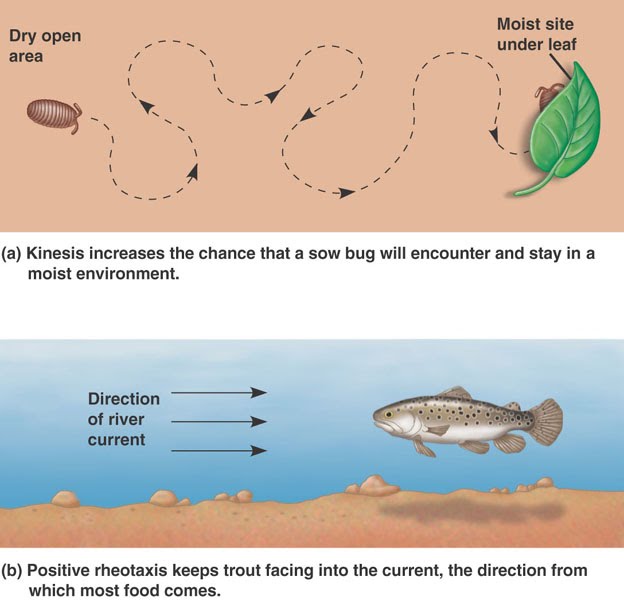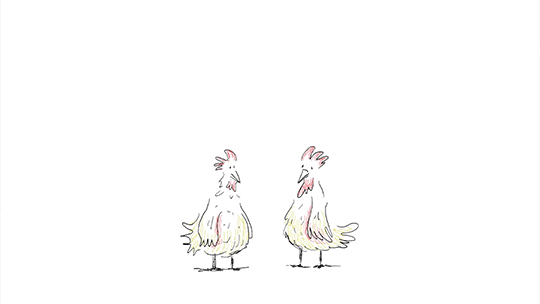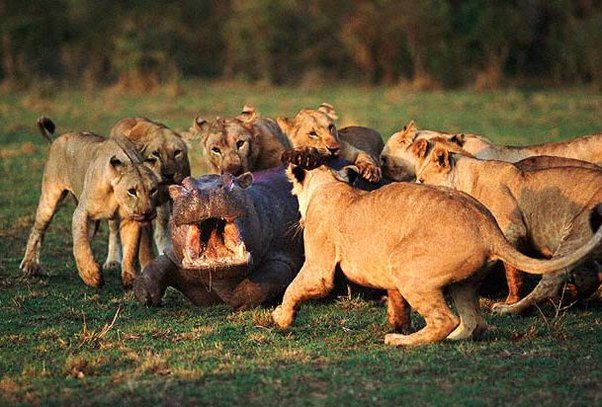Jed Quiaoit
Caroline Koffke
AP Biology 🧬
358 resourcesSee Units
The timing and coordination of biological mechanisms involved in growth, reproduction, and homeostasis depend on organisms responding to environmental cues. This is known as environmental sensing, which refers to the ability of organisms to detect and respond to changes in their environment. Organisms use a variety of behavioral and physiological mechanisms to sense and respond to changes in their environment, which allows them to optimize their chances of survival and reproduction (key to evolution). 🔑
Organism to Environment
One way organisms respond to changes in their environment is through behavioral mechanisms. Organisms can change their behavior in response to environmental cues, such as changes in temperature, light, or food availability. For example, migratory birds use the position of the sun and stars to navigate during their annual migration. Similarly, many insects use changes in day length to time the onset of reproduction. 🌞
Another way organisms respond to changes in their environment is through physiological mechanisms. These mechanisms involve changes in the activity of genes, enzymes, and hormones in response to environmental cues. For example, many plants change the shape of their leaves in response to changes in light intensity, which helps them to optimize their photosynthesis and avoid overheating. Similarly, many animals change the color of their skin or fur in response to changes in temperature, which helps them to regulate their body temperature.
Likewise, a number of environmental factors, such as changing temperature, weather patterns, an increase or decrease in food or water, or a decrease in a shelter can lead to changes within an organism. Many organisms are dependent on the seasons, hibernating or migrating in winter. These mechanisms and responses help them to survive and reproduce.
Examples
- Photoperiodism in plants is the ability of plants to sense changes in the length of daylight and to use this information to regulate growth and development.
For example, many plants use the length of daylight to time the onset of flowering. Short-day plants, such as poinsettias, will only flower when the days are shorter than a certain critical length, while long-day plants, such as wheat, will only flower when the days are longer than a certain critical length. This ability allows plants to time their reproduction to coincide with optimal growing conditions.
- Phototropism is the ability of plants to sense changes in the direction of light and to use this information to orient their growth. For example, plants will grow towards the light in order to optimize their photosynthesis.

Source: Adobe
- Taxis in animals refers to the ability of animals to move towards or away from a stimulus, such as light or a specific chemical.
For example, many insects are attracted to light, which they use to navigate towards food sources or mates.
- Kinesis in animals refers to the ability of animals to change the rate or direction of their movement in response to a stimulus, such as light or a specific chemical.
For example, when a cockroach detects an unpleasant odor, it will increase its rate of movement in order to escape from the source of the odor.

Source: Animal Behavior
- Nocturnal and diurnal activity refer to the different patterns of activity that animals exhibit during the day and night. Nocturnal animals are active at night and sleep during the day, while diurnal animals are active during the day and sleep at night.
For example, lions are diurnal animals, while bats are nocturnal animals. These patterns of activity are usually determined by the availability of food and predators, as well as the temperature and light conditions.
- Fight-or-flight response is a physiological response to a perceived threat or danger. This response is characterized by the release of adrenaline and other hormones, which prepare the body for physical activity, such as fighting or running away. This response is triggered by the activation of the sympathetic nervous system and it increases the heart rate, blood pressure and muscle tone.

Source: Mount Marty
- Predator warnings are the communication of danger by one organism to others of the same species.
For example, when a bird spots a predator, it will emit a specific alarm call that alerts other birds in the area to the danger. This allows them to take evasive action before the predator can attack. Some plants also have mechanisms to warn other plants of herbivory and will release chemical signals to warn nearby plants of an herbivore attack.
Organism to Organism: Communication is Key!
Organisms can also communicate with one another. Different species have their own highly evolved mechanisms of communication. This can involve the release of hormones, behavioral patterns, mating dances, warning calls, or any other number of responses. ❤️

Image courtesy of Giphy.
These forms of communications may be spurred by a physiological response from an organism, meaning something that occurs within themselves, such as hunger, or through an environmental change, such as the approaching of a predator.
As a reminder, just like humans, many species communicate using verbal and nonverbal cues. This can involve audible warning signs and visible body language shifts. Some animal species have communication patterns that are far more complex than what we have.
Organisms often communicate changes that they sense in their environment in order to protect the members of their same species. For instance, prairie dogs are known to become very visible and give a loud warning call that can be heard by their own family members if a predator is approaching. While this may make them more susceptible to the predator, their genes will still be passed on by the family members that survive.
Connections to Evolution
Responses to information and communication of information are vital to natural selection and evolution. This is because the ability to sense and respond to environmental cues, as well as to exchange information with other individuals, can have a significant impact on an organism's survival and reproductive fitness. 💪
Natural selection favors innate and learned behaviors that increase survival and reproductive fitness. For example, animals that are able to detect and avoid predators, or to find food and mates, are more likely to survive and reproduce than those that cannot. Similarly, plants that are able to sense and respond to changes in light intensity and direction, or to defend themselves against herbivores, are more likely to survive and reproduce than those that cannot.
Cooperative behavior also tends to increase the fitness of the individual and the survival of the population. For example, cooperative hunting, child-rearing, and care of the elderly in animals, and mutualistic relationships in plants and animals, such as pollination or seed dispersal, can increase the survival and reproduction of the individuals involved. This is because cooperation allows individuals to work together to achieve a common goal, such as obtaining food or protecting against predators, which can be more effective than working alone. 🐝

Source: ScienceDirect
Check out the AP Bio Unit 8 Replays or watch the 2021 Unit 8 Cram
Browse Study Guides By Unit
🧪Unit 1 – Chemistry of Life
🧬Unit 2 – Cell Structure & Function
🔋Unit 3 – Cellular Energetics
🦠Unit 4 – Cell Communication & Cell Cycle
👪Unit 5 – Heredity
👻Unit 6 – Gene Expression & Regulation
🦍Unit 7 – Natural Selection
🌲Unit 8 – Ecology
📚Study Tools
🧐Exam Skills

Fiveable
Resources
© 2025 Fiveable Inc. All rights reserved.